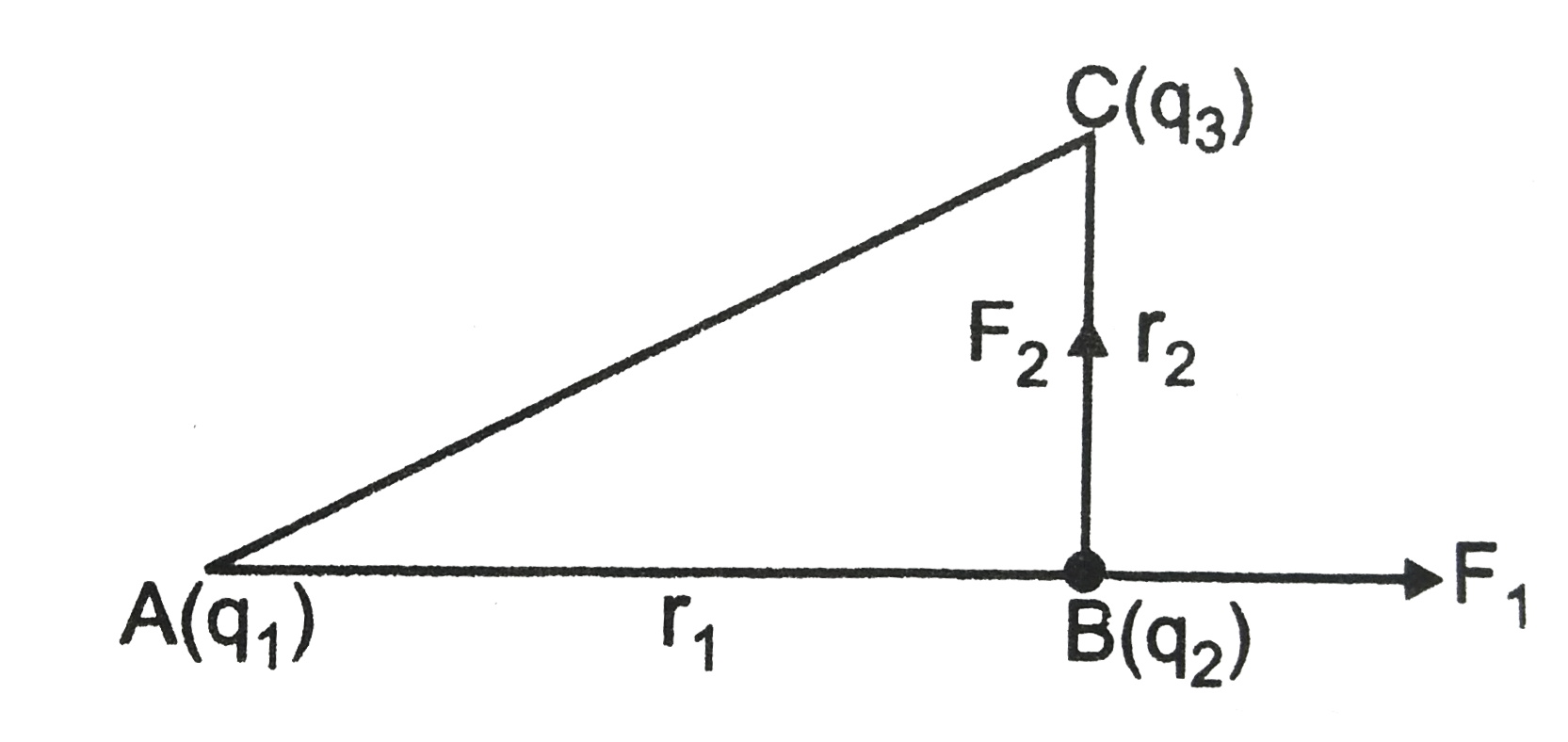Charges , are placed at points A,B,C respectively as shown in Fig. If , calculatae magnitude of resultant force on .

The correct Answer is:
Refer to Fig.
…. along AB produced
along .
Resulant force on
Topper's Solved these Questions
- ELECTROSTATICSBook:PRADEEPChapter:ELECTROSTATICSExercise:FILL IN THE BLANKS
Explore 8 Videos
- ELECTROSTATICSBook:PRADEEPChapter:ELECTROSTATICSExercise:PROBLEMS FOR PRACTICE
Explore 8 Videos
- ELECTROSTATICSBook:PRADEEPChapter:ELECTROSTATICSExercise:VALUE BASED QUESTIONS
Explore 7 Videos
- ELECTRONIC DEVICESBook:PRADEEPChapter:ELECTRONIC DEVICESExercise:Fill in the Blanks
Explore 1 Video
- MAGNETIC EFFECT OF CURRENT AND MAGNETISMBook:PRADEEPChapter:MAGNETIC EFFECT OF CURRENT AND MAGNETISMExercise:Competition Focus (Multiple Choice Questions)
Explore 2 Videos
Similar Questions
The point charges q1=1μC,q2=−2μC and q3=3μC are placed at (1m,0,0),(0,2m,0) and (0,0,3m) respectively. Find the electric potential at origin.
View SolutionTwo point charges q1=20μC and q2=25μC are placed at (-1, 1, 1) m and (3, 1, -2)m, with respect to a coordinate system. Find the magnitude and unit vector along electrostatic force on q2 ?
View Solution
Knowledge Check
Point charge q1=2μC and q2=−1μC are kept at points x=0 and x=6 respectively. Electrical potential will be zero at points
Ax=2andx=9Bx=1andx=5Cx=4andx=12Dx=−2andx=2Three point charge q1=1μC,q2=−2μC and q3=3μC are placed at (1m,0,0),(0,2m,0) and (0,0,3m) respectively. Find the electric potential at the origin.
A2.0×103VB9.0×103VC1.0×103VD10×103V
Two charges q1andq2 are placed at (0,0,d) and (0,0,-d) respectively. Find locus of points where the potential is zero.
View SolutionTwo charges q1andq2 are placed at (0,0,d) and (0,0,-d) respectively. Find locus of points where the potential is zero.
View SolutionIn a certain co-ordinate system, charge, q1=−2×10−4C is at x=0,y=0, charge q2=1×10−3C is at x=10m and y=0 and charge q3=1×10−4C is at x=0,y=5cm, Find the magnitude of resultantant force on q1
View SolutionTwo charges q1andq2 are placed at (0,0d)and(0,0−d) respectively. Find locus of points where the potential is zero.
View SolutionThree charges q1=1μC,q2=−2μC,andq3=−1μC are placed at A(0,0,0),B(−1,2,3,)andC(2,−1,1). Find the potential of the system of three charges at P(1,−2,−1).
View SolutionConsider a system of three charges q3,q3and−2q3 placed ar point A,B and C respectively, as shown in the figure. Take O to be the centre of the circle of radius R and angle CAB=60∘. Choose the incorrect options

(1) The electric field at point O is q8πε0R2 directed along the negative x-axis
(2) The potential energy of the system is zero
(3) The potential at point O is q12πε0R
(4) The magnitude of the force between the charges at C and B is q254πε0R2
View Solution

